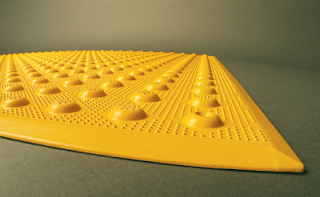Have
you ever walked on a busy street and seen raised panels near a crosswalk or bus
stop? Well, do you know what those raised panels represent? These are the
tactile walking indicators that provide safe access to pedestrians. The tactile warning strips indicate pedestrian aces routes, thus reducing the
chances of slips and falls. The strips are made of a variety of materials like
cast iron, stainless steel, aluminum. But, when it comes to higher durability,
iron tactile plates are preferred by the contractors. They are especially
important for people walking between a sidewalk and a street. But, as a
contractor, before you go for the purchase and installation of tactile warning
plates, you must address the following concerns.
- Durability: Tactile
indicators are available in different types of materials. Now, which one
to choose will depend on the area of application and project requirement.
As far as the durability is concerned, cast iron plates always come to the
forefront. They are available in a variety of colors and provide enough
color contrast with the surrounding surface. They are long-lasting, and
once you install them, you don’t have to replace them any time soon. Also,
they are able to withstand severe weather conditions.
- Code
compliance: Every
tactile product contractor’s use in their project must be ADA compliant.
The tactile indicator must comply with the national, provincial, and
regional code standards. Also, they must have a code-compliant color
contrast with the surroundings. The tactile tile must be textured and
slip-resistant to reduce the chances of accidents.
- Beneficial for people without disabilities: If you think tactile warning plates are useful to only visually impaired people, it’s time to think again. They also help common people by providing safe access across the facility.

Comments
Post a Comment